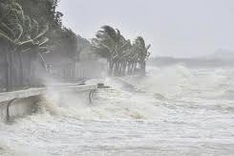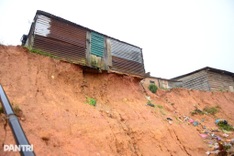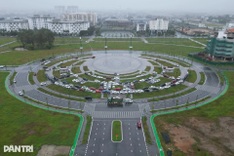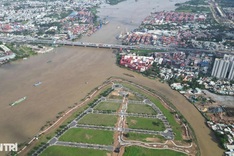The loss of biodiversity has been the big worry of many countries in the world, while the development of harmful exotic species is considered the biggest threat. The State budgets big amounts of money every year to eliminate them, worries still exist.
 |
Over the last many years, a lot of exotic species have entered Vietnam through different ways, causing big economic losses, environmental damages and harming people’s health. Hamsters, golden snail once “attacked” rice fields, while red ear turtles recently became a big threat, disrupting the ecological balance and threatening native species.
Exotic species can penetrate into the living environment through different ways: gone by natural wind, going according with the sea stream or following migratory species. Besides, they are brought to new living environments by human.
Together with the development of transport and trade exchange, people bring with themselves, accidentally or deliberately, species from some places to other places. In many cases, the creatures are brought to the places which are located very far from their home countries.
It is very difficult to control the import of exotic species, especially the accidental import. The species can mingle among goods, live in water and stick themselves to means of transport such as boats and ships, with which they can go to new living environment.
Also, many species are imported with purpose which aims to serve the economic development, entertainment, scientific research. However, since the species cannot be controlled well, they have been multiplying in the new environment, thus causing bad consequences.
Scientists have recalled the case of Myocastor coypus which was imported to Vietnam in the late 1990s. The animal was brought to Vietnam because it could provide meat for food and skin and feather for export. However, Vietnamese scientists later found out that this was a very dangerous species. This is a kind of rodents, fighting for food with other species, destroyed construction works and dykes. Though the animal had been completely killed by 2002, the lesson would never be forgotten.
The appearance and strong development of golden snail once caused a big headache to management agencies. Every year, the State and people had to spend hundreds of millions of dong to kill golden snail. However, the result remains modest.
Over the last 20 years, since the day of entering Vietnam, golden snails have been developing very rapidly everywhere, from Mekong Delta to the provinces and the northern and central regions, severely damaging rice and farm produce fields.
In Ba Ria-Vung Tau province, local farmers have spent hundreds of millions of dong on the medicine to kill golden snail for 500 hectares of rice field, but golden snails have been existing and multiplying.
Lam Dong proves to be the province which has most suffered from golden snails. On the key rice production districts of Da Huoai, Duc Trong, Di Linh, Don Duong and Da Te, golden snails have been developing so rapidly with the density of 50 snails per square meter, badly affecting the 3500 hectares of rice fields out of the 14,056 hectares of summer-autumn rice fields of the province.
The rapid migration of golden snails from the south to the north has also made farmers suffer in Thanh Hoa, Nam Dinh and Thai Binh.
Developing quietly, but dangerously, is Mimosa pigra--sourced from America. Scientists believe that the plant first appeared in Vietnam in 1979, while these plants now can be seen in all localities of the country. Where there are Mimosa Pigra, other trees cannot grow.
In many places, including the Tram Chim National Park in Dong Thap province, Cat Tien Park in Lam Dong or Tri An Reservoir in Dong Nai province, the plants are threatening the life of a lot of bird varieties.
The Government three years ago requested the Ministry of Agriculture and Rural Development to draw up the plan to treating the species. In some provinces in the southern region, goats are bred who eat the plants, but the result remains very modest.




















